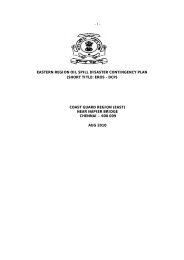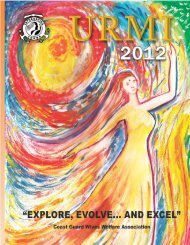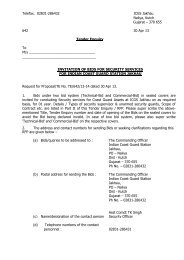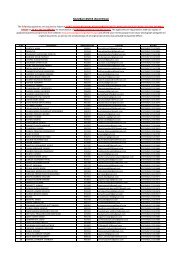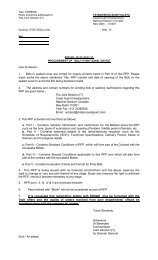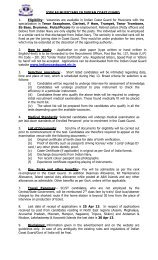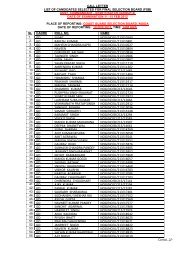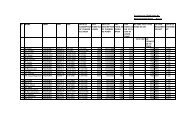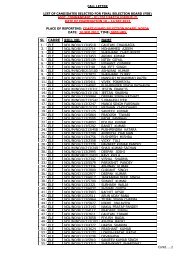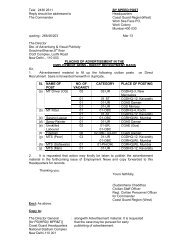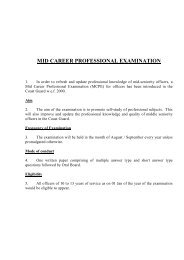Jan 2009 edition - Indian Coast Guard
Jan 2009 edition - Indian Coast Guard
Jan 2009 edition - Indian Coast Guard
You also want an ePaper? Increase the reach of your titles
YUMPU automatically turns print PDFs into web optimized ePapers that Google loves.
<strong>Jan</strong> <strong>2009</strong> Vol X Issue 1<br />
Similarly, only ships of 400 gross tonnage and above<br />
engaged in international voyages are required to have an<br />
International Anti-Fouling System Certificate. These<br />
certificates will be issued after a required survey, as<br />
outlined above, is completed.<br />
Ships of 24 metres or more in length but less than<br />
400 gross tonnage (excluding fixed or floating platforms,<br />
FSUs and FPSOs) must carry a declaration on Anti-Fouling<br />
Systems signed by the owner or authorized agent. The<br />
declaration will have to be accompanied by appropriate<br />
documentation supporting the fact that the ships’ antifouling<br />
system is compliant with the AFS Convention,<br />
e.g. a paint receipt or contractor invoice.<br />
REVISED MARPOL ANNEX II<br />
(NOXIOUS LIQUID SUBSTANCES<br />
CARRIED IN BULK)<br />
The revised Annex II Regulations for the control of<br />
pollution by noxious liquid substances in bulk includes a<br />
new four-category categorization system for noxious and<br />
liquid substances.<br />
The new categories are :<br />
• Category X:<br />
Noxious Liquid Substances which, if discharged<br />
into the sea from tank cleaning or deballasting<br />
operations, are deemed to present a major hazard<br />
to either marine resources or human health and,<br />
therefore, justify the prohibition of the discharge<br />
into the marine environment;<br />
• Category Y:<br />
Noxious Liquid Substances which, if discharged into<br />
the sea from tank cleaning or deballasting operations,<br />
are deemed to present a hazard to either marine<br />
resources or human health or cause harm to<br />
amenities or other legitimate uses of the sea<br />
and therefore justify a limitation on the quality and<br />
quantity of the discharge into the marine environment;<br />
• Category Z:<br />
Noxious Liquid Substances which, if discharged into<br />
the sea from tank cleaning or deballasting operations,<br />
are deemed to present a minor hazard to either marine<br />
resources or human health and therefore justify less<br />
stringent restrictions on the quality and quantity of<br />
the discharge into the marine environment; and<br />
• Other Substances:<br />
Substances which have been evaluated and found to<br />
fall outside Categories X, Y or Z because they are<br />
considered to present no harm to marine resources,<br />
human health, amenities or other legitimate uses of<br />
the sea when discharged into the sea from tank<br />
cleaning of deballasting operations. The discharge of<br />
bilge or ballast water or other residues or mixtures<br />
containing these substances are not subject to any<br />
discharge requirements of MARPOL Annex II.<br />
The revised annex includes a number of other<br />
significant changes. Improvements in ship technology,<br />
such as efficient stripping techniques, has made possible<br />
significantly lower permitted discharge levels of certain<br />
products which have been incorporated into Annex II.<br />
For ships constructed on or after 01 <strong>Jan</strong>uary 2007, the<br />
maximum permitted residue in the tank and its associated<br />
piping left after discharge will be set at a maximum of<br />
75 litres for products in categories X, Y and Z - compared<br />
with previous limits which set a maximum of 100 or 300<br />
litres, depending on the product category.<br />
17



